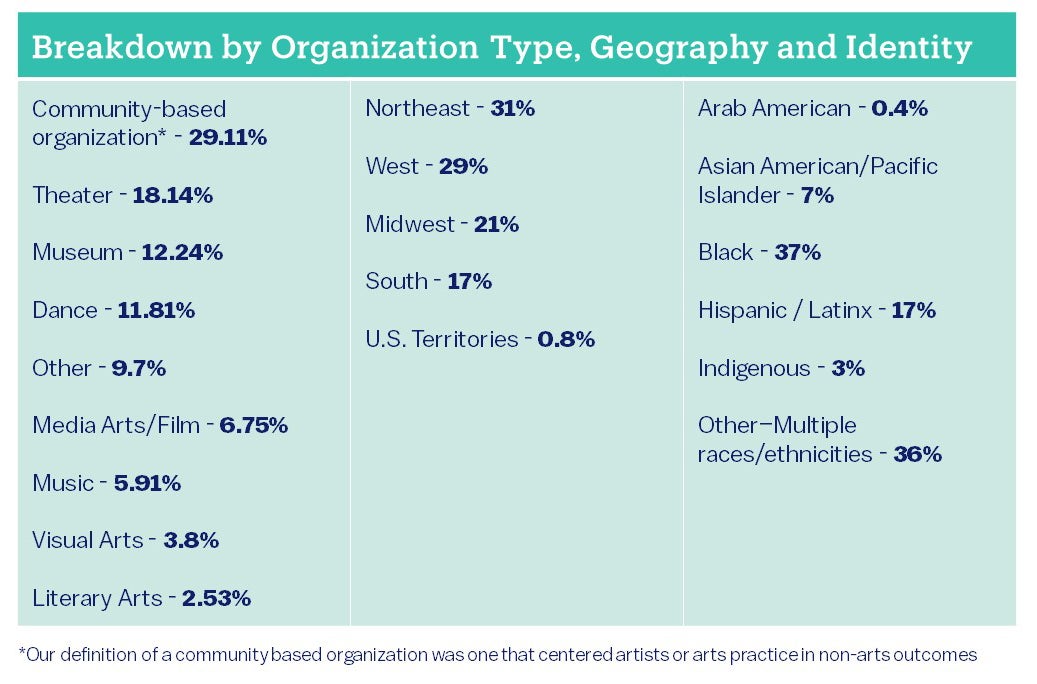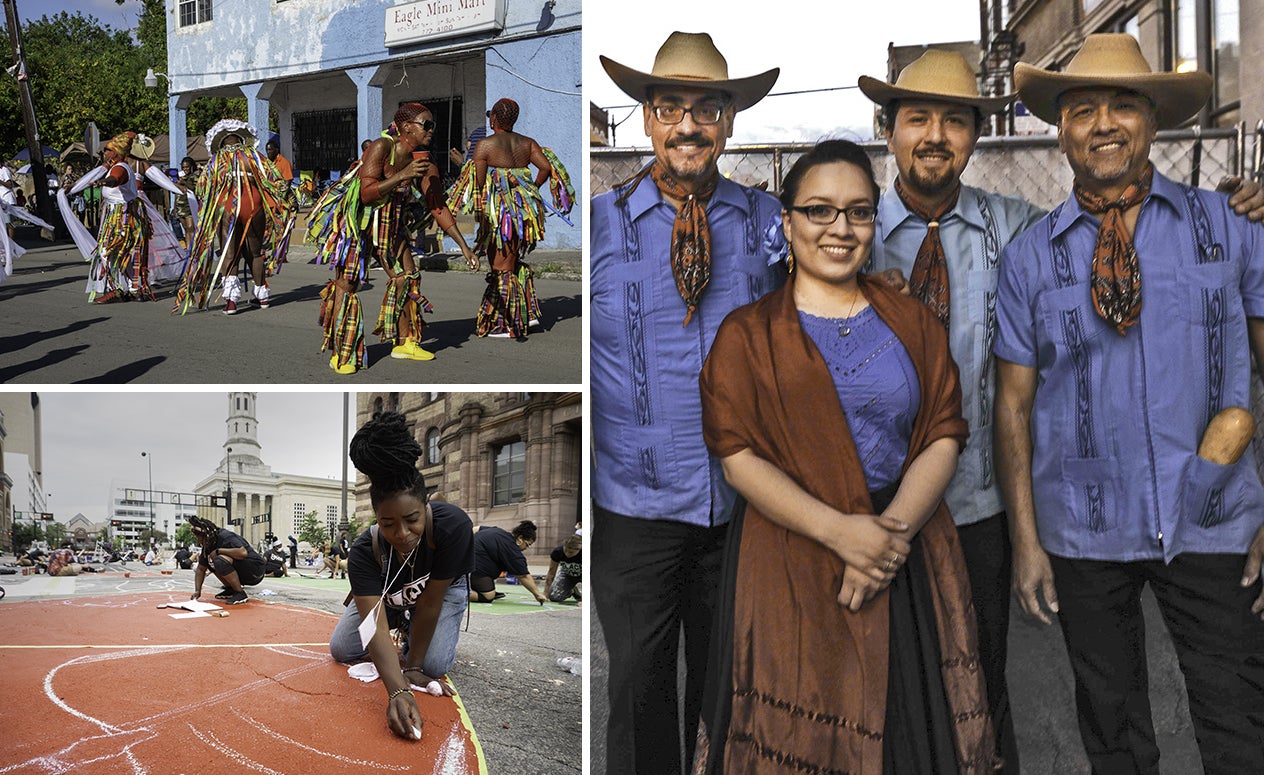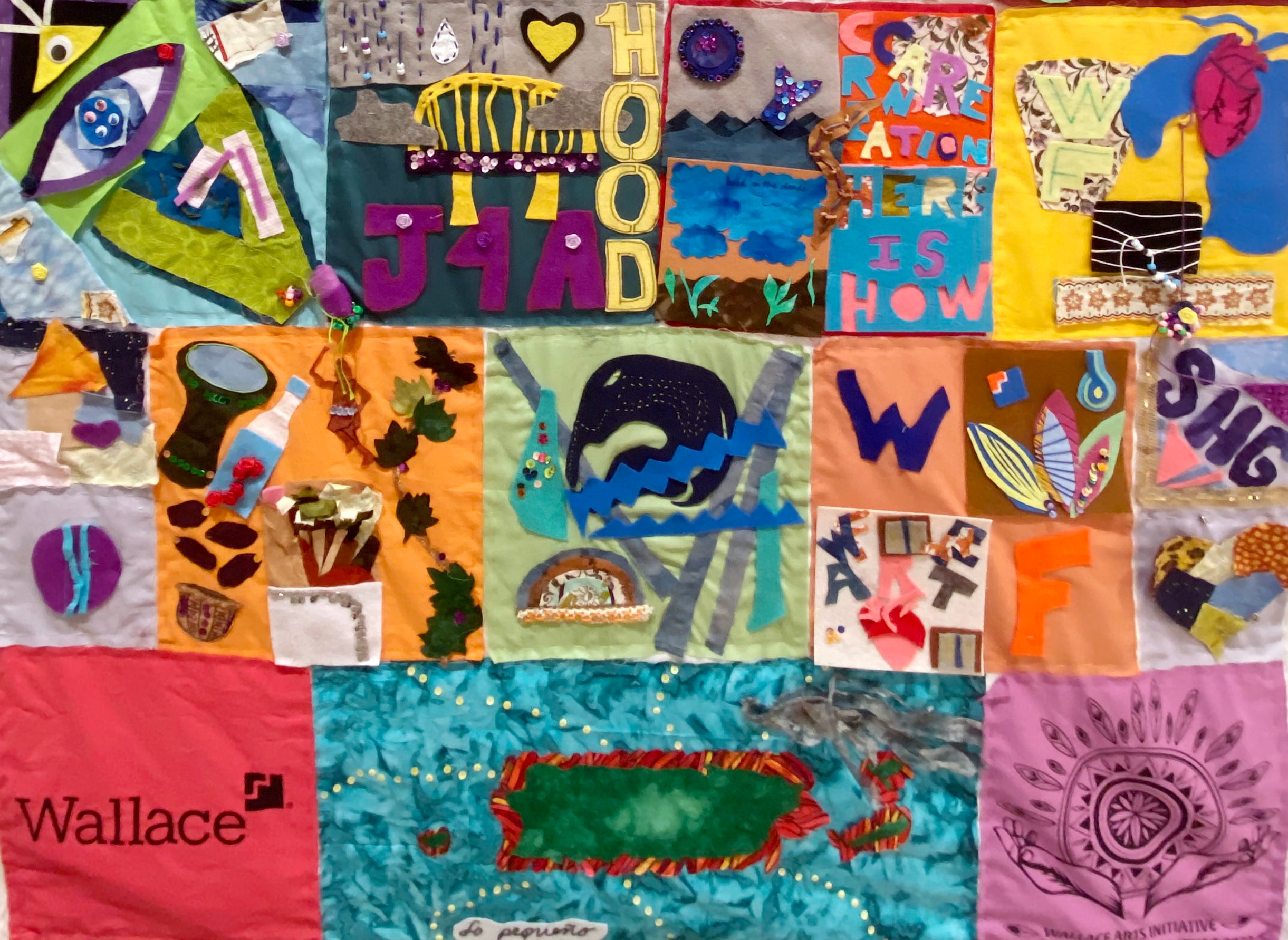The Wallace Foundation’s arts team recently completed an open call for proposals to participate in a major new initiative focusing on arts organizations of color. The initiative seeks to fund several such organizations and study their efforts to help answer one central question: How do arts organizations of color use their community orientation to increase resilience, sustain relevance and overcome major strategic challenges?
It was our first open call in more than a decade. We generally commission surveys of eligible organizations, shortlist those that we think will fit in the initiative and ask them to submit proposals. We know of no reliable way to survey the plethora of arts organizations of color throughout the country, so we began this initiative by asking all who are interested to submit a letter of interest for further consideration.
The call resulted in 250 submissions from organizations after a call across the United States, District of Columbia, Puerto Rico, American Samoa, the Northern Mariana Islands, the U.S. Virgin Islands, and Guåhan (Guam). They gave us much insight into a new area for us, and we had much to read about and digest. While we determine the best paths ahead, we thought we'd share three things we learned from the open call thus far.
1. We learned a bit about the landscape of the field.
Our usual process of inviting a small number of organizations to submit proposals often leads us to large, well-known organizations our staffers or peer foundations already know. With the open call, however, we received letters of interest from many organizations we'd never heard of before. Most were, as we had assumed, clustered around the coasts and in large cities such as Chicago. But we were delighted to hear from organizations in other, sometimes overlooked, parts of the country that are doing fascinating work from which we can learn.
More than a third of letters of interest came from organizations focused on African American arts or communities. We hope our ultimate cohort will be reflective of arts organizations from all communities and traditions, and the apparent underrepresentation of other communities suggests that we must work harder to make sure future opportunities are more widely shared and our invitation feels inclusive of and responsive to the work others are doing.
Conversations with leaders in the field also helped us realize that our definition of "arts organizations" may be too narrow. Some indigenous and native culture organizations, for example, told us what they do may not be called “art” by some, but it is about preserving and promoting a cultural heritage. Conversely, there were a few visual arts organizations that defined themselves primarily as community based organizations. They exist not just for their art, but to use their art to benefit their communities. The ways in which organizations define and categorize themselves differ from assumptions we made about who they are to their communities. It is important that we keep such nuances in mind as we develop our new initiative.
We are now working to learn more about interested organizations and exploring ways to design an initiative that can benefit not just participating organizations, but also the field at large. Our aim is to select the best cohort of organizations, not necessarily the strongest organizations or the newest ideas. For example, some projects we read about are quite innovative, but they are very specific to their organizations' situations and not as relevant to the broader field. Such projects are certainly worthy of support, but may not be the right fit for our upcoming initiative.

2. We read three main themes in the submissions we received:
Communities are changing. Many organizations are grappling with shifts in the communities they were created to serve. Gentrification or immigration is changing the nature of many communities, while shifts in economies and societies are changing these communities' needs. How do organizations founded by and for a particular community use their community orientation to navigate such changes.
Organizations are changing. Several organizations expressed the need to change long-established structures and practices. Many have to consider new strategic directions, plan for expansion, change staffing structures and recruit new leaders as long-serving founders and directors begin to step down. How do organizations use their community orientation to smooth such fundamental transitions?
Artistic preferences are changing. Audiences learn about and consume arts and culture much differently than they did a few decades ago, when many arts organizations of color got their start. How do organizations founded to support and maintain particular art forms and communities of artistic practice use their community orientation to adapt to new cultural environments?
3. Lastly, we learned that we must keep learning.
During our open call, we heard from so many arts organizations of color, whether through our one-on-one consultations (we hosted over 100 of them!), our email inboxes, social media or the service organizations with whom we work. Some of the feedback was critical and frank—a helpful reminder that we must tread carefully and respectfully when venturing into new areas where organizations such as ours have sometimes done harm. Sometimes we heard—more powerfully in the organizations' words than what we would have read in a research report—what these organizations are experiencing and trying to do for their communities. We listened to all of it, considered it and are redesigning and refining our initiative to respond to what we heard.
And so, I’d like to express my gratitude to those who showed up and contributed to an honest and vulnerable exchange with us. I look forward to staying in conversation with you and sharing more about what we learn along the way.




